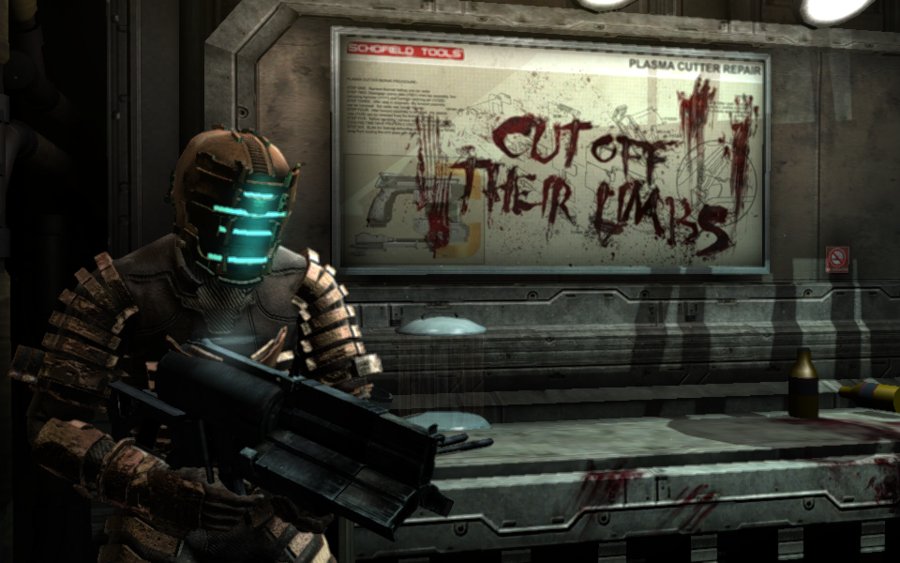About Dead Space 1, 2 & 3
This segment of the horror games documentary pays homage to a revered trilogy—Dead Space. Although a newcomer in comparison to classics like Resident Evil, Alone in the Dark, or Silent Hill, Dead Space swiftly expanded its game universe while steadfastly adhering to its foundational roots. When I refer to "the roots" from a gameplay perspective, I, of course, allude to Resident Evil 4, yet in terms of setting and universe, a myriad of inspirations intertwines. Counting cinematic influences, Alien and 2001: A Space Odyssey, with their themes of alien creatures, dead space, ancient alien artifacts, unveil a shocking truth about extraterrestrial origins.
Renowned authors' works echo the universe crafted by Visceral Games. Dead Space meticulously describes a dystopic future world, drawing parallels to the literary realms of Bruce Sterling, Phillip K. Dick, Isaac Asimov, and Arthur Clarke. The narrative unfolds in a mining colony and aboard the mining ship Ishimura, disturbed by something ancient beneath Aegis VII's surface. As Ishimura goes offline, Isaac Clarke, our protagonist and engineer, embarks on a mission to investigate the planet cracker, a task requiring him to repair vital ship systems. The attention to detail in repairing the ship's mechanisms captivates science fiction enthusiasts.
Isaac's journey involves tasks ranging from repairing trams for mobility to clearing air filtration systems infested with parasites. Gravity normalization, distress signal transmission from a docked asteroid, and various engineering feats ensue, all set against the backdrop of the chilling fear of dying alone in the unforgiving vastness of space.
Dead Space's unique combat mechanic demands dismembering monsters by severing their limbs and delivering decisive blows with a powerful magnetic boot. The second installment maintains the gameplay of the first while delving deeper into the storyline, exploring Isaac's post-traumatic shock and his internal struggles manifested by a haunting deceased friend.
The third iteration adheres to the established formula, introducing new mechanics and expanding the narrative. Manual weapon construction at work benches becomes a pivotal addition, allowing players to craft their ideal weapons from scattered scrap pieces. The game unfolds with cinematic moments, revealing a collapsing futuristic city and a subsequent journey to the origin planet Tau Volantis, where Isaac and his crew face challenges on a broken ghost ship in orbit.
Dead Space 3 introduces an open-world mechanic as players explore the ship graveyard around Tau Volantis, presenting a real-time experience with Isaac navigating the vastness of space. The narrative complexity and surprises in Dead Space 3 extend beyond the main story, offering new game+ choices, including a "Dead Space 1 style" option, adding replayability.
The cooperative aspect in Dead Space 3 introduces a new character, Carver, with distinct motives and gameplay elements, fostering role-playing dynamics and cooperation between players. Despite some spin-offs, the essence of Dead Space lies in its status as a masterpiece. The detractors' discourse on microtransactions or purported shifts towards an "action Uncharted-oriented" style fades against the game's formidable narrative, expansive universe, and its commitment to preserving the spirit of true classic horror science fiction. In essence, Dead Space stands as a testament to its fantastical storytelling, expansive universe, and its unwavering dedication to preserving the true spirit of classic horror science fiction.

Comments
Post a Comment